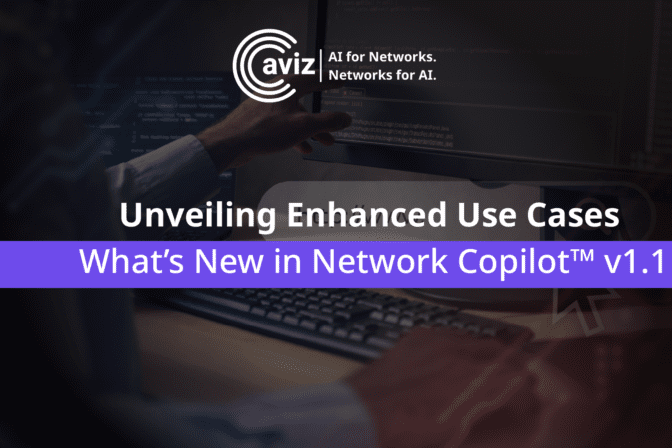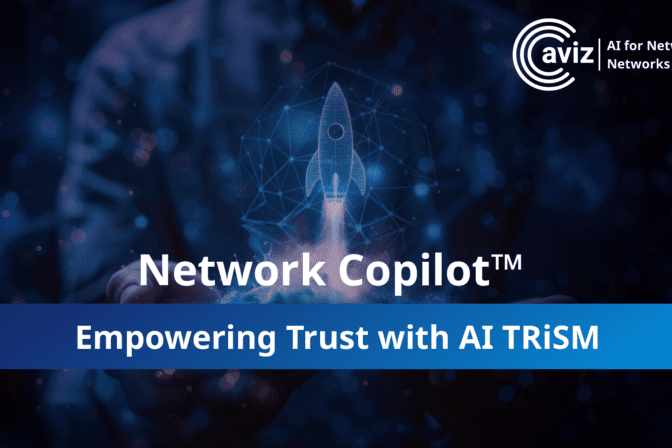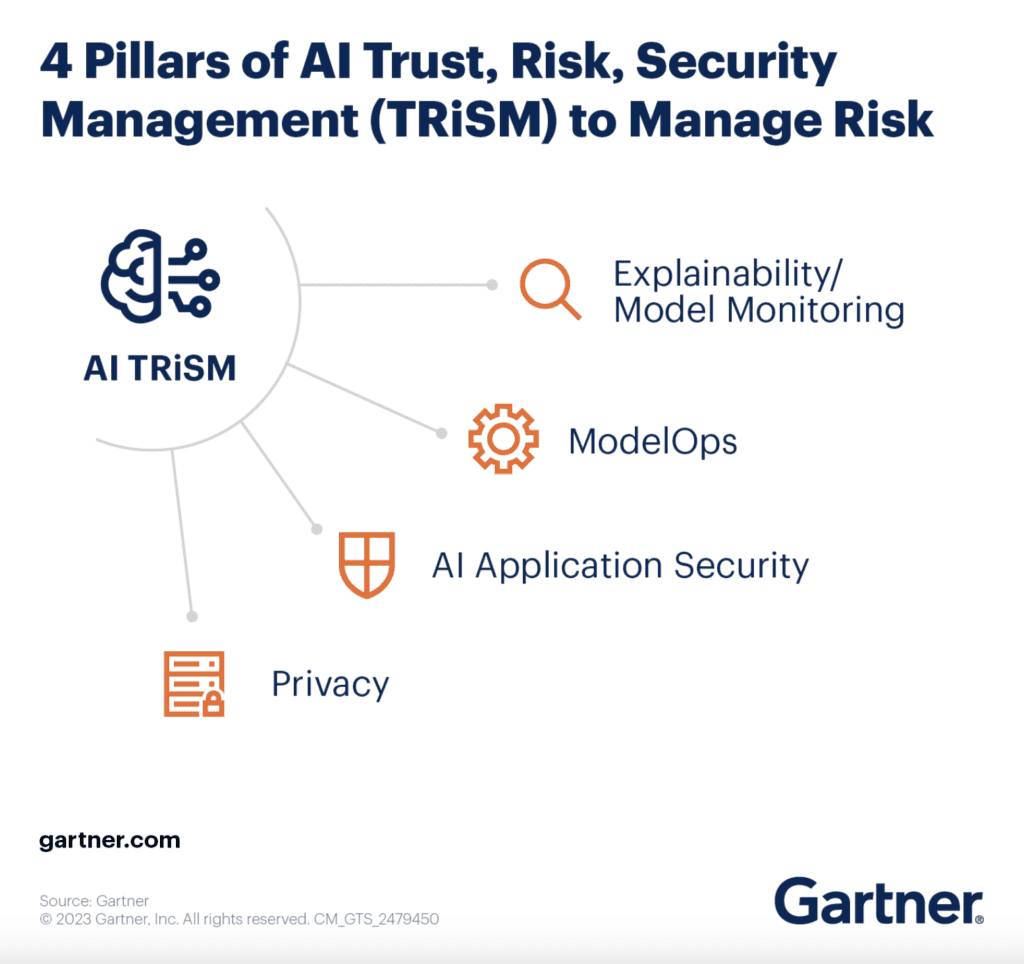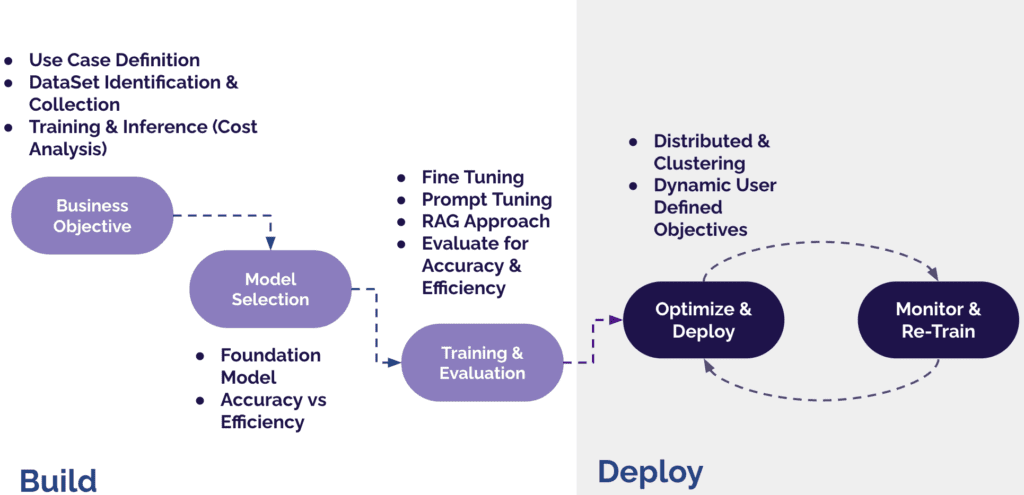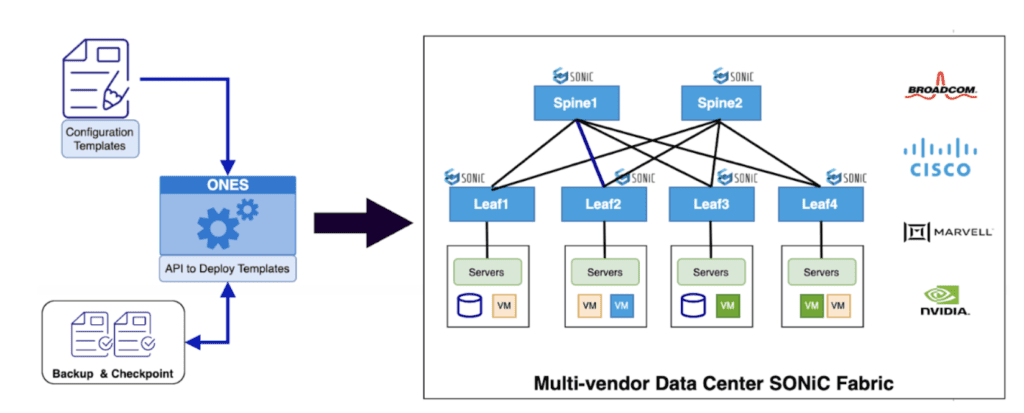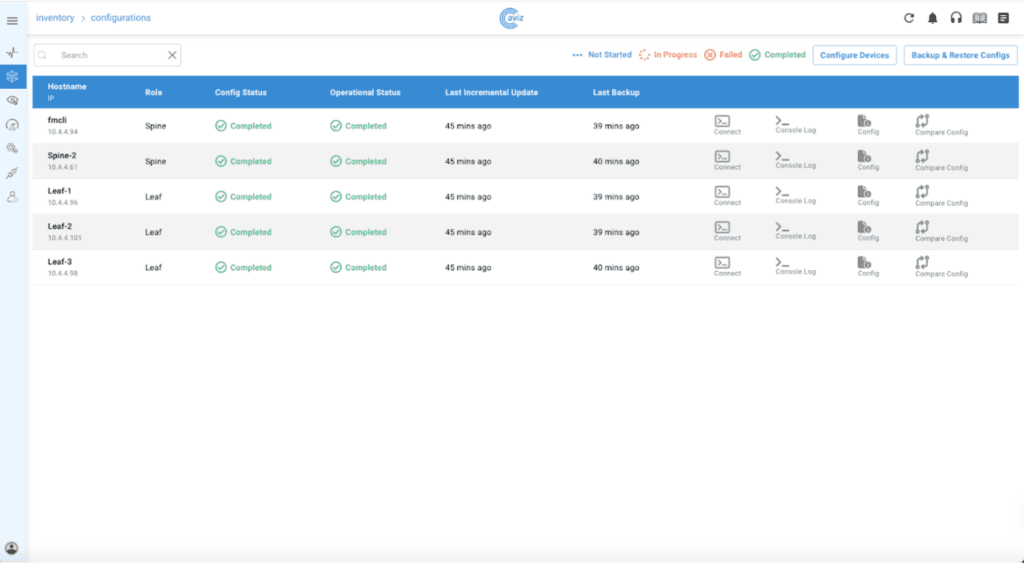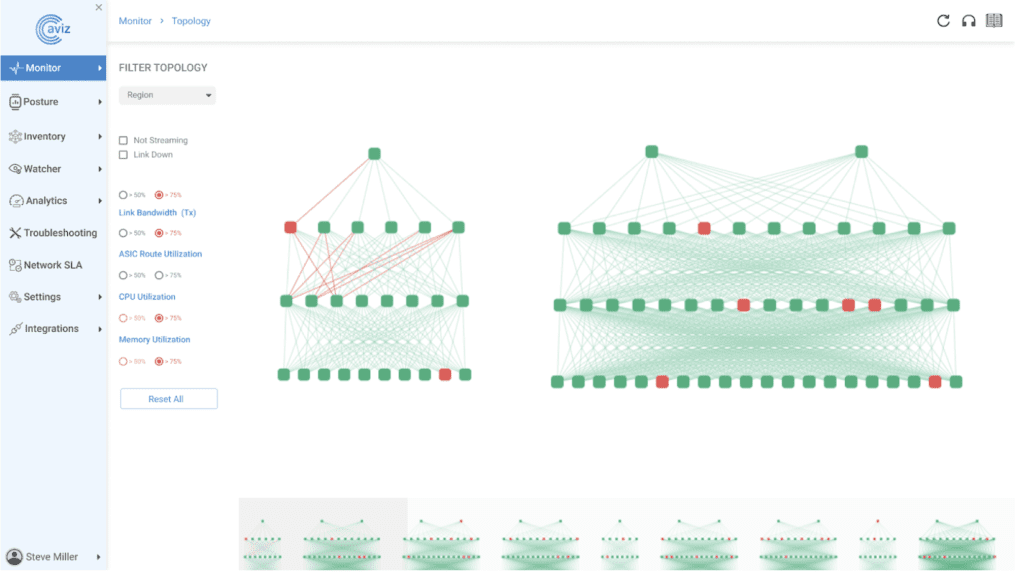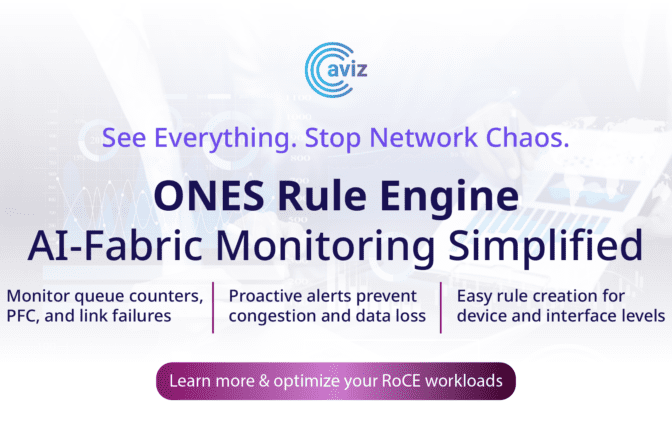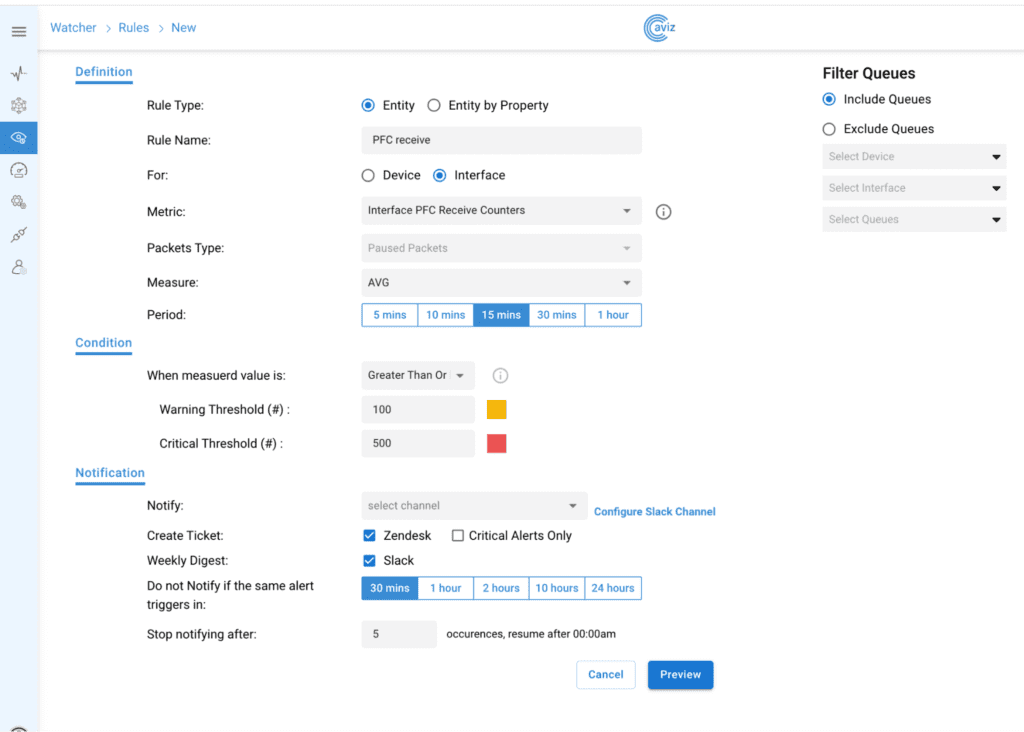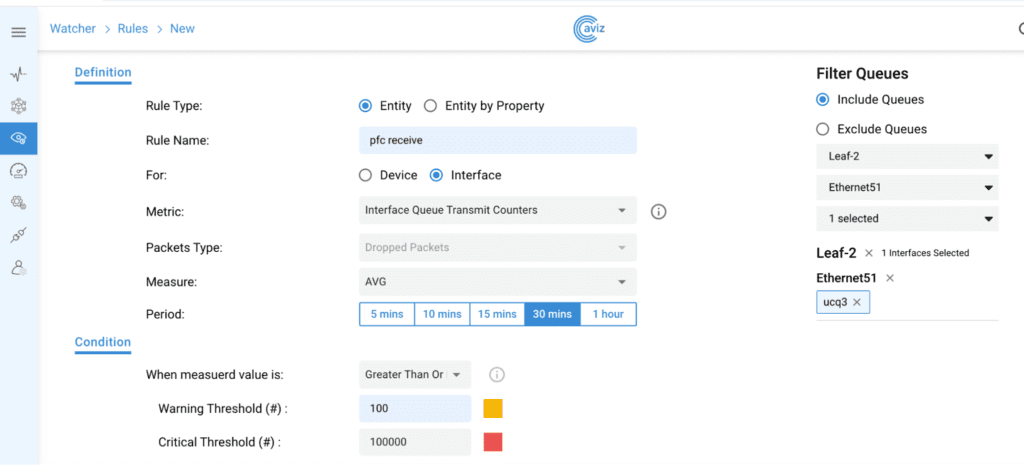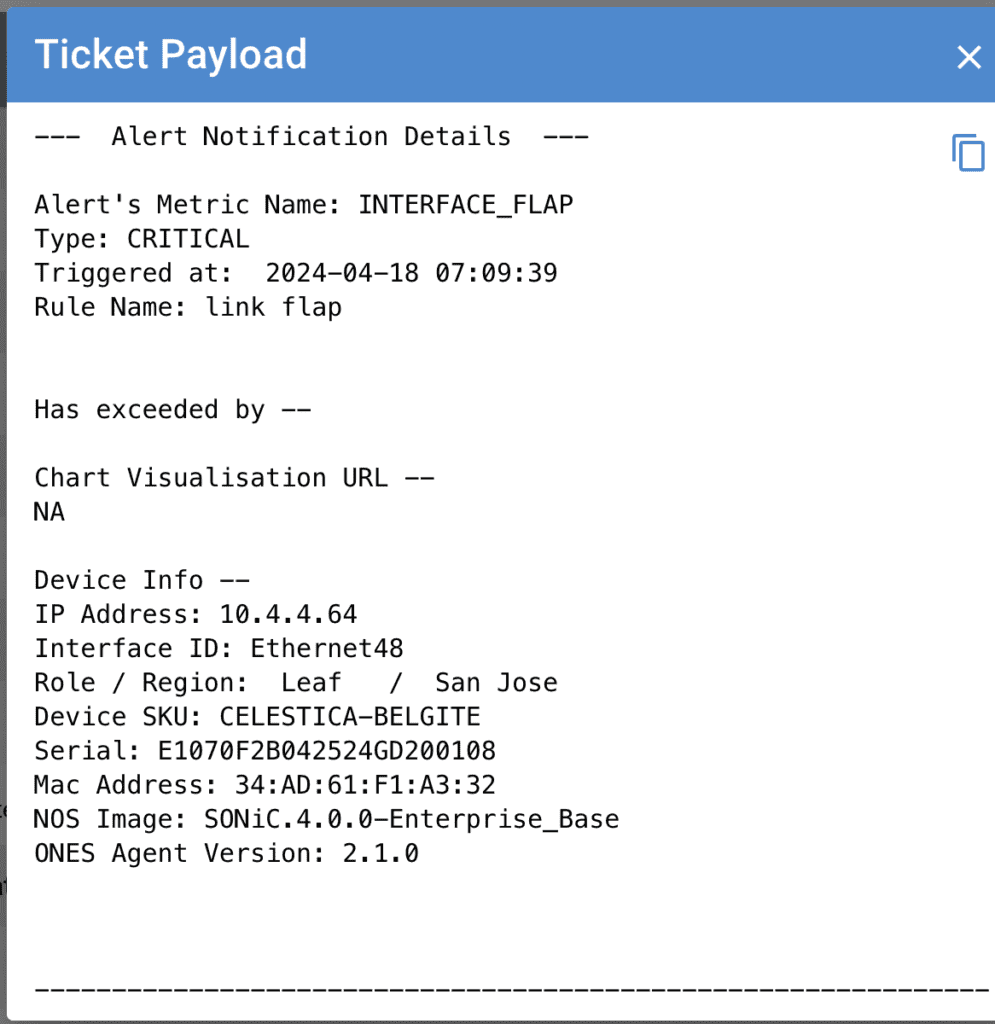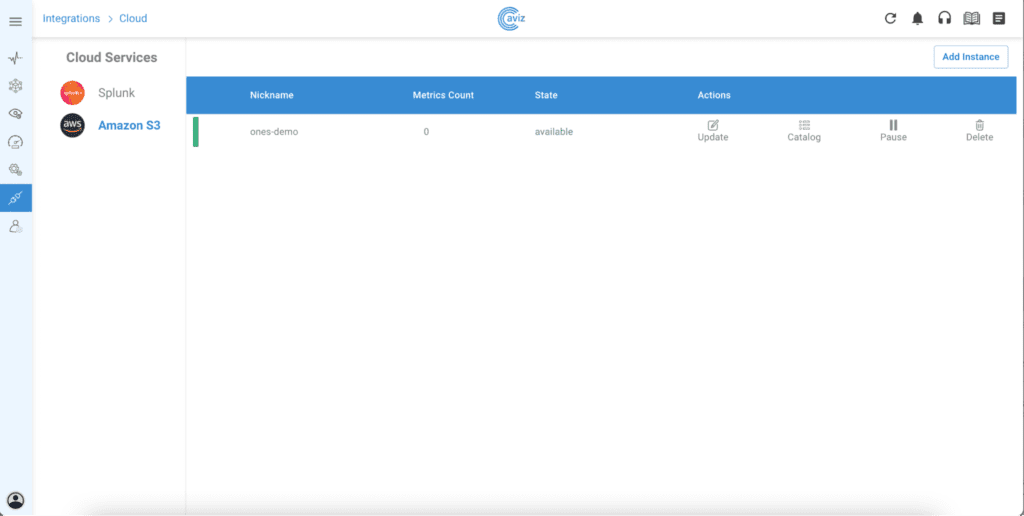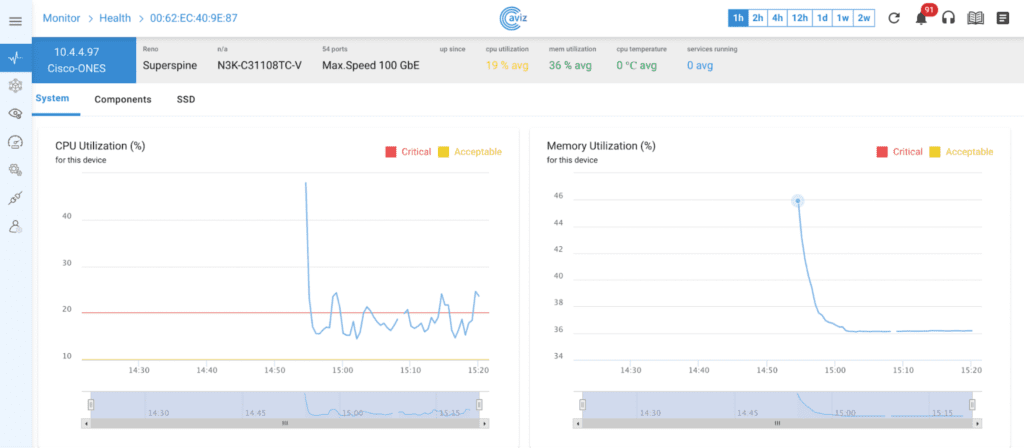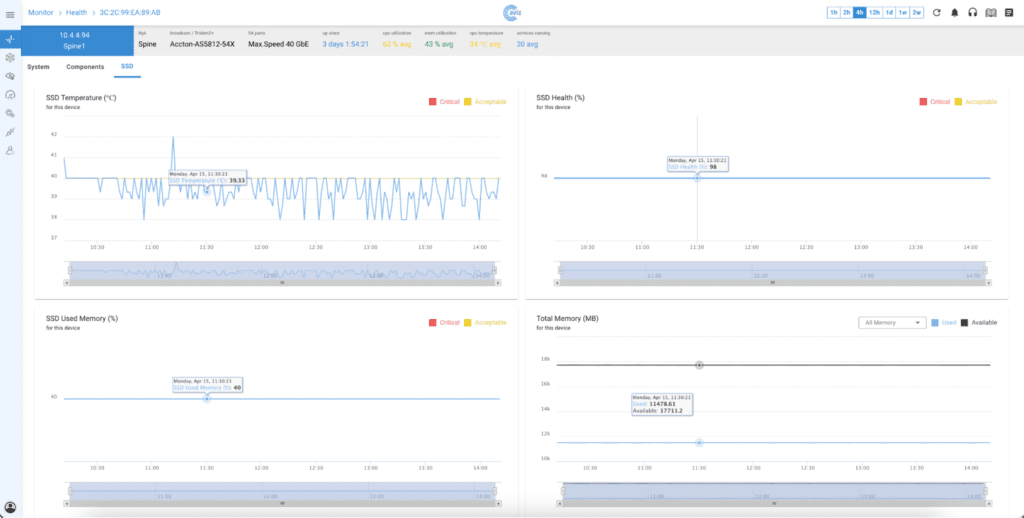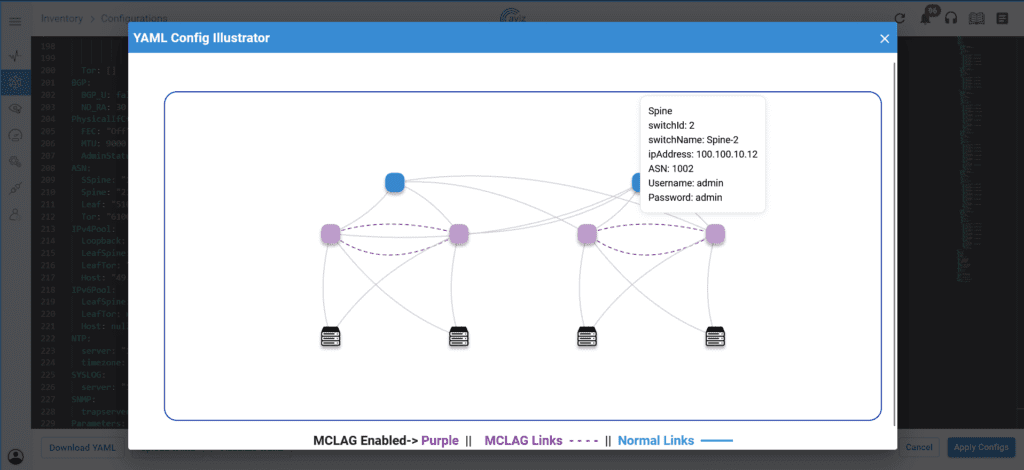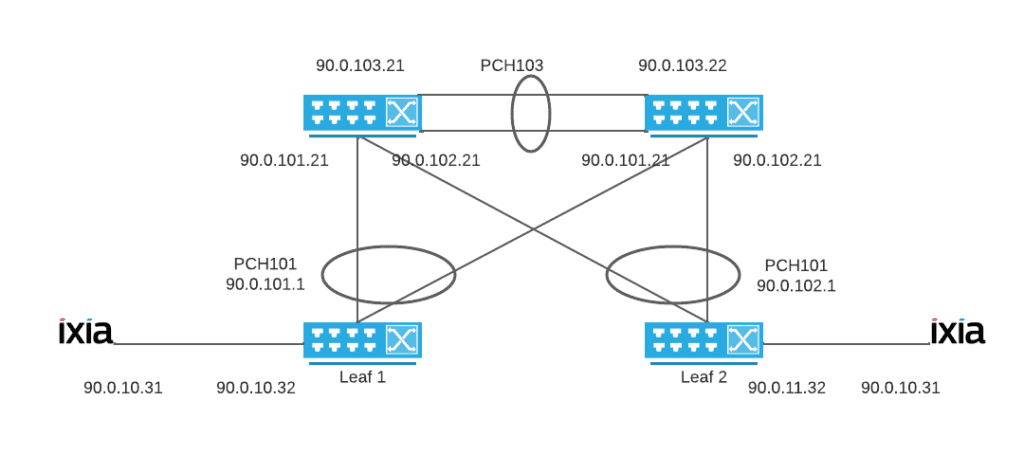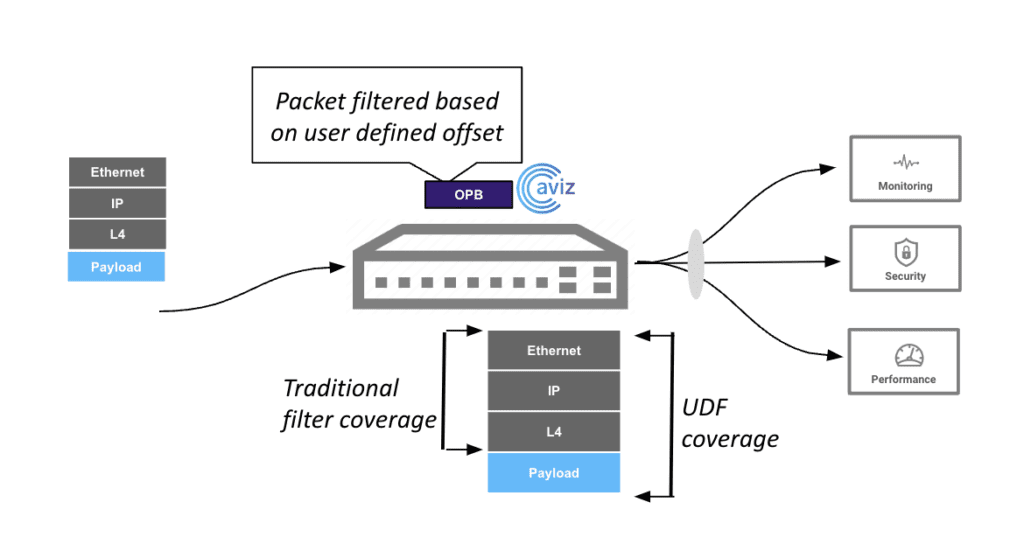We are thrilled to unveil Aviz Network Copilot™ v1.1.0, packed with innovative features and enhancements. This cutting-edge AI-driven network analysis tool is crafted to help network operators, executives, and stakeholders pinpoint performance bottlenecks and optimize resource utilization via a highly intuitive chat interface.Prepare to dive into the capabilities of Network Copilot™ and explore how its latest updates can significantly improve your network operations’ efficiency.
Data Ingestion Capabilities
Network Copilot™ has expanded its capabilities to include device telemetry ingestion through gNMI, sFlow, and API, in addition to the existing SNMP & Aviz ONES telemetry agent. These enhancements broaden its compatibility across multi-vendor NOS using SNMP, gNMI, and other protocols, facilitating effortless multi-vendor deployments with Network Copilot. The metrics gathered from on-premises networks now encompass Inventory, System Resources, Platform Health, Counters, and Flow Records
Use Cases
In this release, We have introduced several new use cases to provide more comprehensive insights and visibility into your network.
1. Network Upgrade Compliance
Network upgrades are inevitable and crucial for any network to ensure security, performance and reliability. Network Copilot can now assist the Network Administrators with the repetitive task of verifying network upgrades and ensuring the network is restored to its original state post-upgrade, even in a multi-vendor environment.

2. Security Audit Reports
Maintaining IT compliance is crucial for any organization and regular security audits play a vital role in this process. Network Copilot can assist you in ensuring your configuration and security protocols meet the required standards. With Network Copilot, you can verify various aspects like ACL, SSH, TACACS, RADIUS+ & Control plane policing etc..
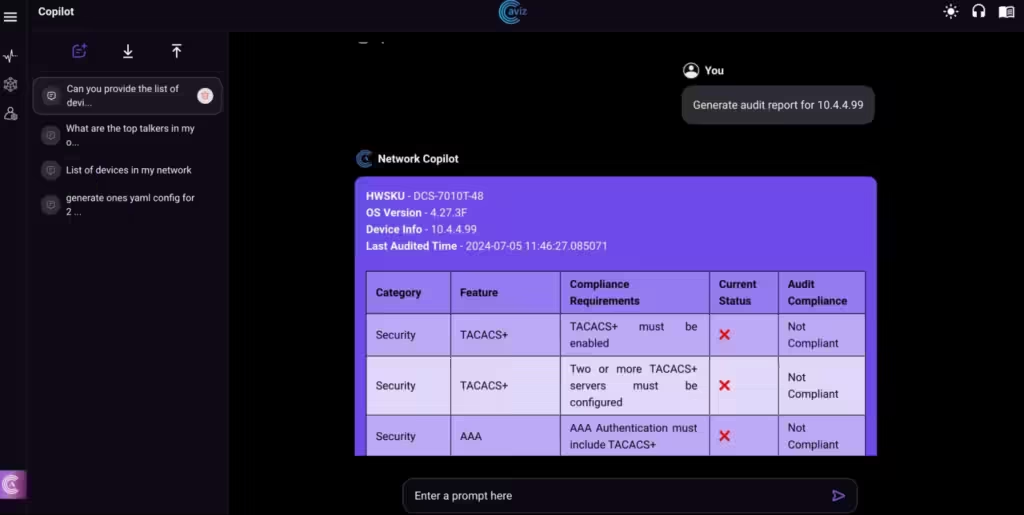
3. Outbound Network Performance Monitoring
Network Copilot can help you monitor your outbound network performance by analysing network traffic, examining QOS and monitoring bandwidth, it provides insights into your SD-WAN & MPLS networks. This ensures you have a clear understanding of your network’s performance, enabling you to optimize and maintain efficient network operations.
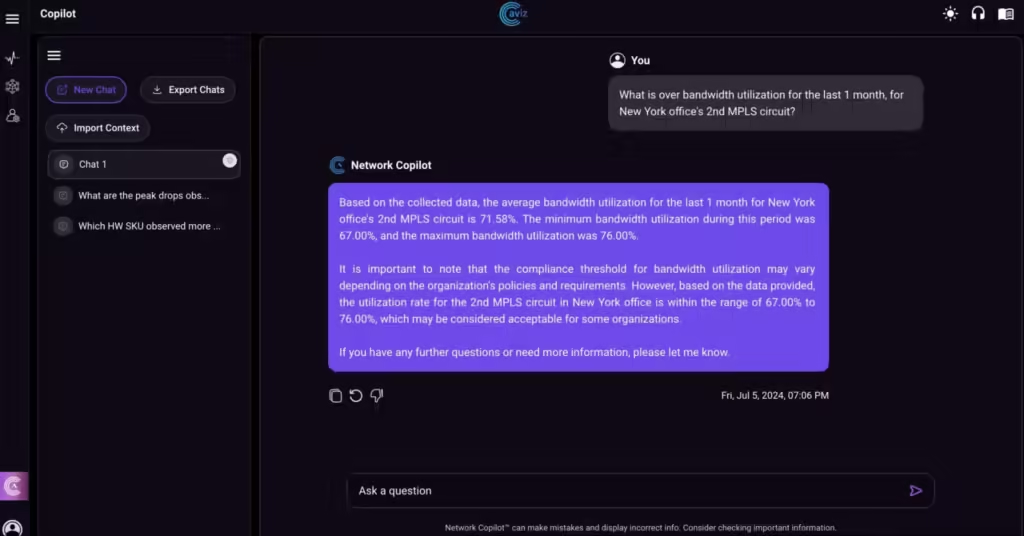
4. Application Visibility and Real-time Network Insights
Network Copilot can analyze the network traffic to identify the applications generating the traffic and its purpose. Utilizing flow data such as sFlow and NetFlow, Network Copilot monitors and analyzes traffic patterns and application behavior, providing detailed insights into the data traffic.
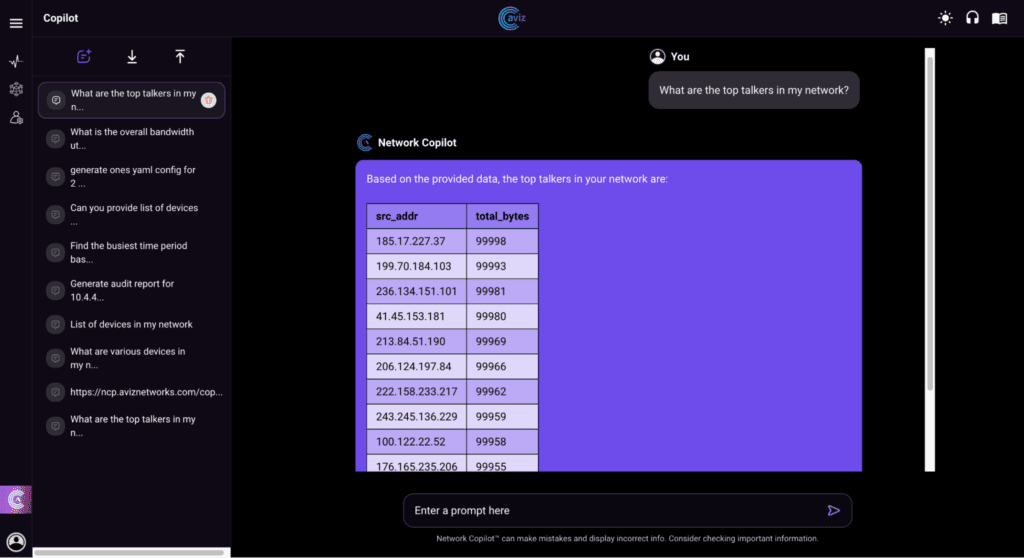
5. Network Troubleshooting
Network Copilot can help Network Administrators effectively diagnose network issues by analyzing past traffic patterns and drops networks.
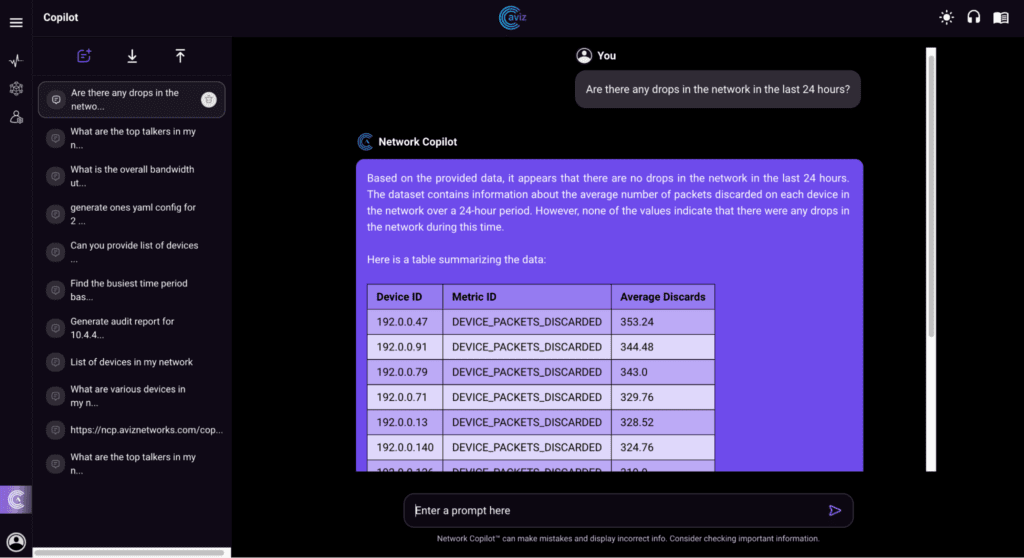
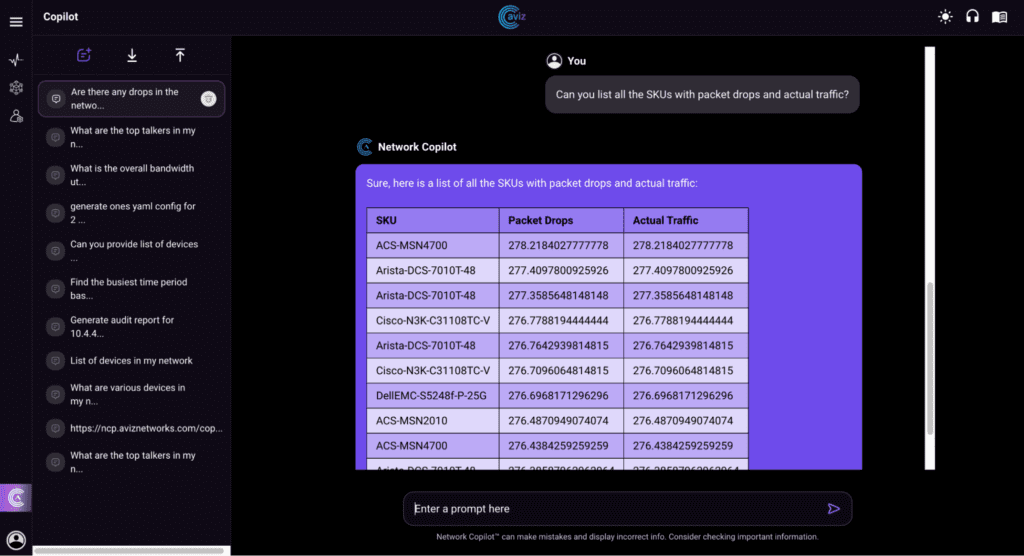
6. Enhanced Japanese Support
Network Copilot now has enhanced support for the Japanese language.
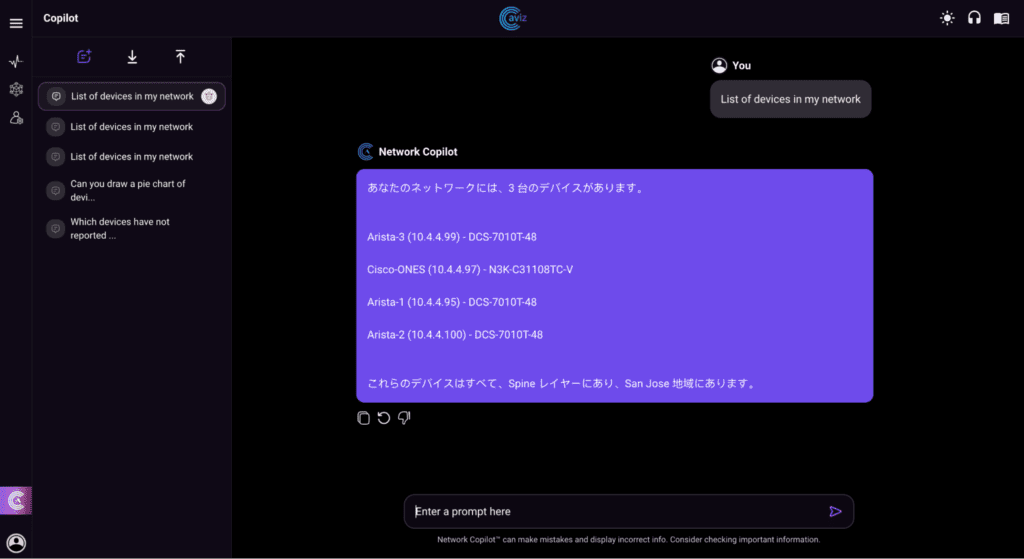
UI Enhancements
To enhance user-friendliness and simplify interactions with Network Copilot UI, the following improvements have been made:
- Streaming responses
- Exporting conversations
- Import user context
- Timestamps
- Regenerating responses
- User feedback on the responses for improvements
- Dark and Light Mode
In conclusion, Aviz Network CopilotTM v1.1.0 brings a suite of exciting new features designed to revolutionize the way to monitor and analyze your network. With its advanced generative AI assistant, the latest release enhances network operations through a user-friendly chat interface, offering capabilities such as dark mode for visual comfort, expanded telemetry ingestion methods for seamless multi-vendor deployment, and new use cases to ensure network upgrade compliance, security audit standards, monitoring outbound network performance, application visibility, and real-time network insights. Network Copilot v1.1.0 is poised to set a new standard in network monitoring & analysis, empowering network operators, executives, and stakeholders to optimize and maintain efficient network operations effortlessly.
Contact us today because with Network Copilot™ v1.1, you’re not just upgrading your software — you’re transforming your network infrastructure strategy to be smarter, faster, and more reliable

